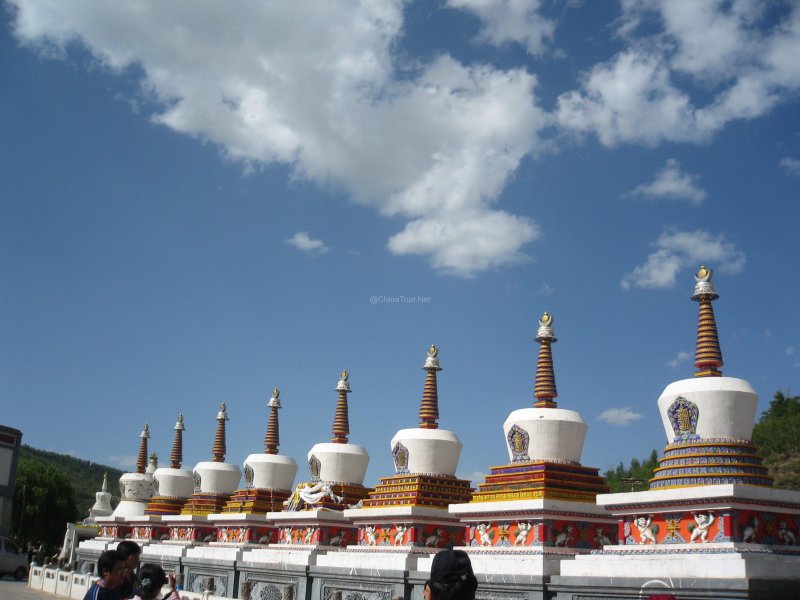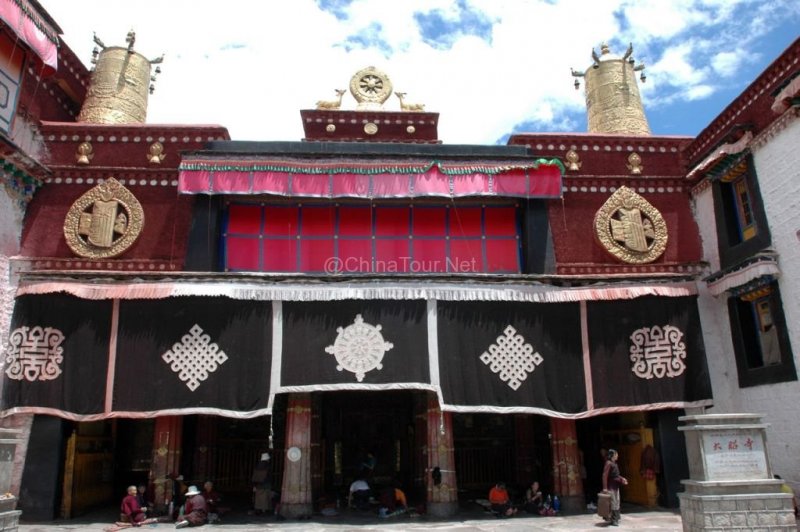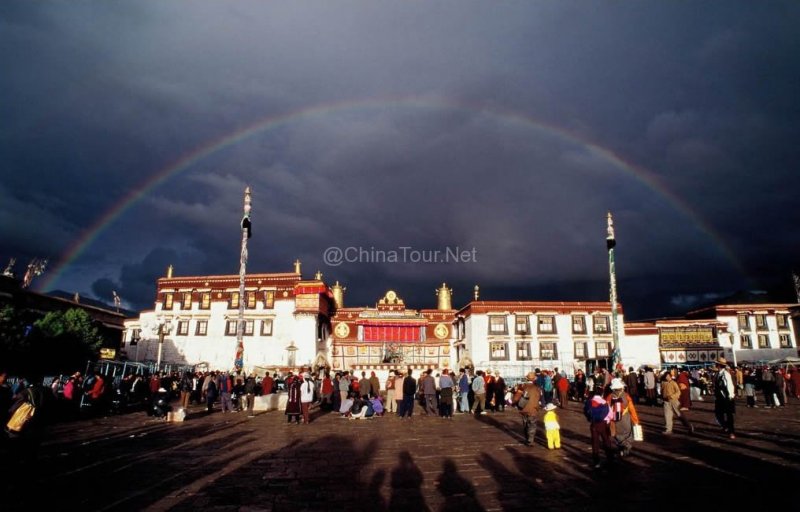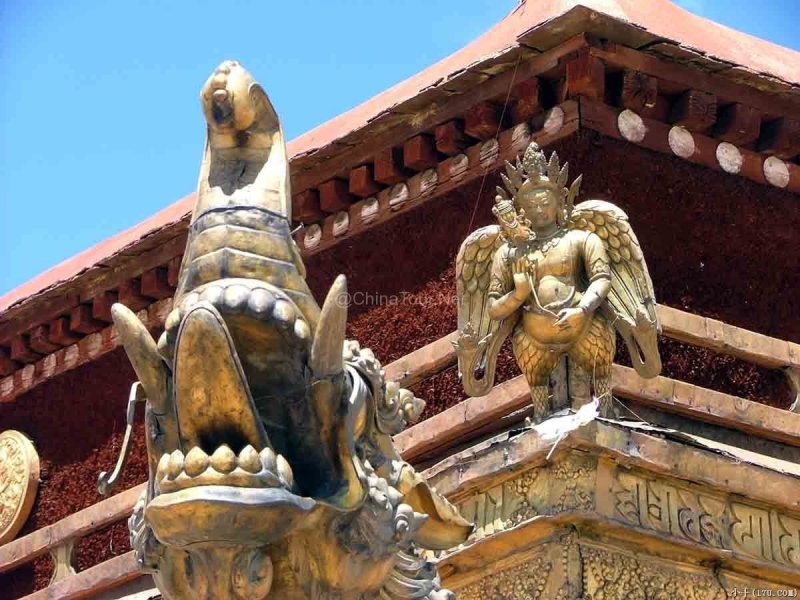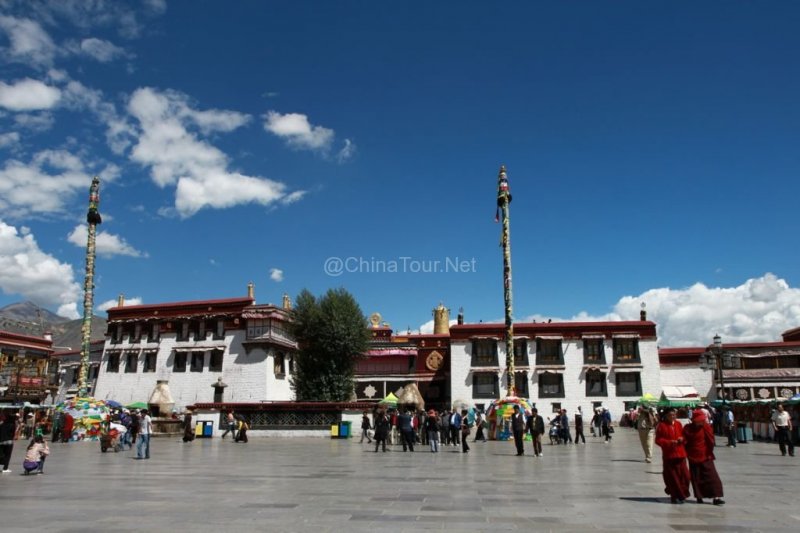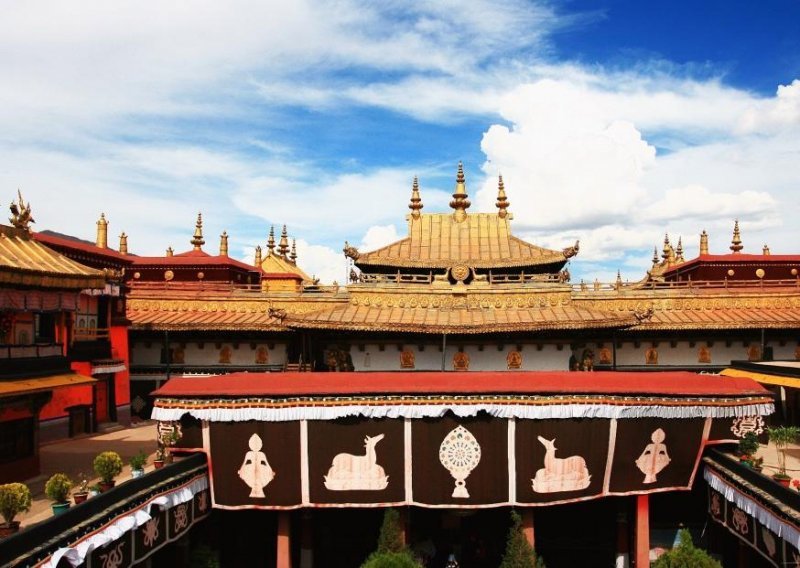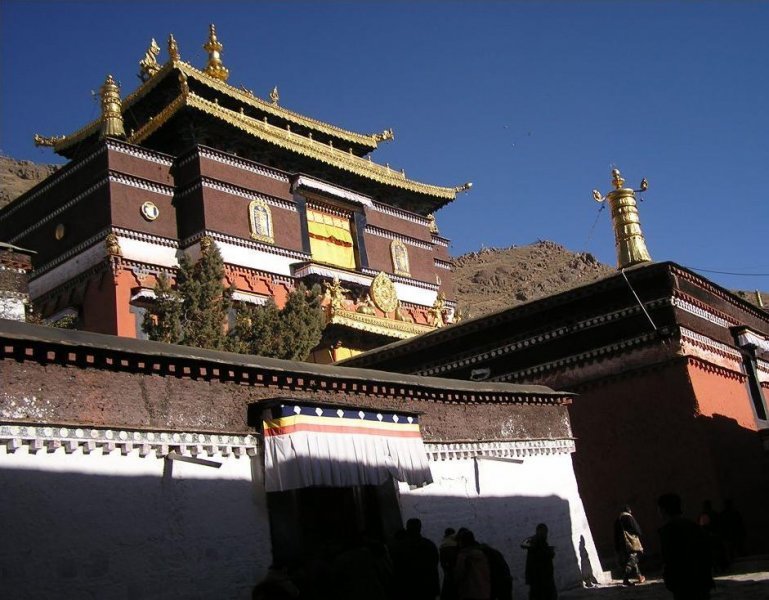Situated in the center of the old section of Lhasa, Jokhang Temple was one of the most important religious centers in Tibet it was built in the mid-7th century A.D. by the legendary king Songtsen Gampo, and later extended by successive rulers, it has now become a gigantic architectural complex.
The Jokhang Monastery, Da Zhao Si in Chinese, is located in downtown Lhasa of Southwest China’s Tibet Autonomous Region. It is a Buddhist hall for Tibetan Buddhists and a symbol of unity between the Tibetan and Han peoples. First built in the mid-7th century, the monastery was a temple in the shape of a two-story boat. After repeated expansion in the ensuing centuries, the monastery is now a combination of large buildings covering an area of 25,100 square meters.
It is said that the monastery area was originally a huge lake. When Tubo King Songtsan Gambo married Tang Dynasty (618-907) Princess Wencheng in 641 and the Nepalese Princess Khridzun, he built two monasteries respectively for them — the Ramoche Monastery to house the statue of Sakyamuni (which equals the size of the Buddha when he was 12 years old) brought by Princess Wencheng, and the Jokhang Monastery to house the statue of Sakyamuni (which equals the size of the Buddha when he was 8 years old) brought by Princess Khridzun.
Located in the east, facing to the west, it is a four-story temple with splendid golden roofs. It has architectural feature of Tang Dynasty and also assimilated very much features from both Nepalese and Indian Buddhist temples. The murals in the temple mainly depict the life stories of historic characters. It was always an important pilgrim destination for Tibetans, but after being added in the list of world heritage site by UNESCO, the temple is now a source of attraction for all the visitors visiting the town. Come and reveal the cosmos of the holiest site in Tibet and find the way of living of the monks. The temple is absolutely a place for devotees and tourists, come along with your family and friends to seek blessings of the lord. The architecture and the resplendence of history are other main reason to take up a trip to this holy divine.
When the Jokhang Monastery was built, the monastery was named Rosa (Goats Temple), in memory of the goats that carried clay to fill up the lake for the monastery’s construction.
When Tang Princess Jincheng came to Tubo in the 8th century, she brought the statue of Sakyamuni (which Princess Wencheng brought to Tubo) from the Romache Monastery to the Jokhang Monastery; hence, the Jokhang Monastery became the worshipping center. Therefore, Rosa was renamed Lhasa, meaning “Holy Land of Buddha.”
The Hall of Sakyamuni is the most important in the monastery. It enshrines a statue of Sakyamuni, which Tang Dynasty Princess Wencheng brought to Lhasa. The city is called Lhasa, meaning “holy land,” because of the statue’s presence. The statue attracts an endless flow of worshippers every day. Around the Hall of Sakyamuni are eight low-lying, dark halls where butter lamps flicker in front of Buddha images. These halls were all built during the Tubo Kingdom period.
The golden urn, called Jinbenbaping, which Qing (1644-1911) Emperor Qianlong had cast in the 57th year of his reign (1792) for the reincarnation of the Dalai Lama and the Panchen Erdeni, is enshrined in front of the Zongkapa statue. The urn is 34 cm high, and is covered with patterns such as lotus flower petals and plant branches. Inside the urn are five ivory lots. When the soul boy of the Dalai Lama or the Panchen Erdeni has to be determined, names of the soul boy candidates are written on lots. The urn is then sealed and shaken repeatedly. After this, one lot is drawn out of the urn and the chosen boy houses the soul of the demised Living Buddha.
The southern part of the second floor is the Hall of the Prince of Dharma, which enshrines the statues of Tubo King Songtsan Gambo, Tang Dynasty Princess Wencheng, and Nepalese Princess Bhributi, as well as Tubo Minister Gar Tongtsan’s statues that were products of the ancient times.
Between the second and third floors is the Hall of the Bandan Lhamo, a female deity who guards the Jokhang Monastery and Lhasa. Four giant golden tops built during the mid-14th century and the 17th century towers on the top floor. Located in the center of Lhasa City, like a holy bird spreading his wings, they glisten in the sunshine.
In front of the Jokhang Monastery is the Princess Willow Tree. Legend has it that when Tang Dynasty Princess Wencheng was married in Tubo, she planted this willow tree. There are also stories that say she planted three other willow trees, respectively at the foot of the Potala Palace, in front of the Ramoche Monastery, and at Balangxoi (Black Tent) in the eastern district of the city. Next to the Princess Willow Tree is the Uncle-Nephew Peace Pledge Monument, erected in 822 to mark the alliance between the Tang Dynasty and the Tubo Kingdom.
Ticket fare: CNY85
Opening hours: 9:00-18:00
Address: Barkhor Street, Chengguan District, Lhasa
